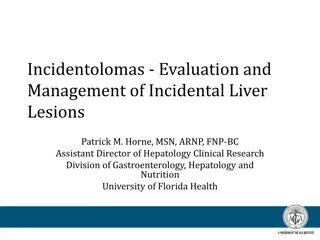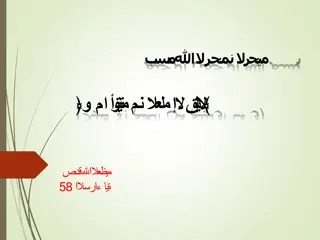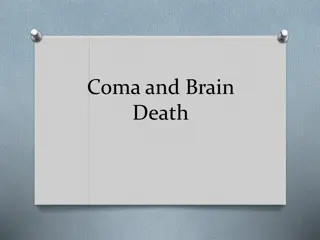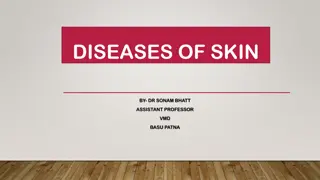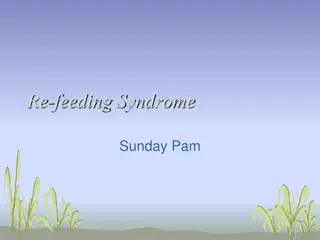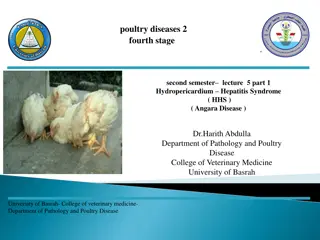Death from Starvation and Cold: Mechanisms and Lesions
Starvation and cold can lead to death through specific mechanisms that affect the body's metabolism and tissue integrity. In cases of starvation, the body breaks down fat stores, leading to organ damage and eventual death. For cold-related deaths, exposure to extreme temperatures disrupts metabolic functions, leading to oxygen deprivation and tissue freezing. Post-mortem findings in starvation include thinness, atrophied organs, and dry tissues, while cold-related deaths are characterized by hypothermia from heat loss or decreased heat production.
Download Presentation

Please find below an Image/Link to download the presentation.
The content on the website is provided AS IS for your information and personal use only. It may not be sold, licensed, or shared on other websites without obtaining consent from the author.If you encounter any issues during the download, it is possible that the publisher has removed the file from their server.
You are allowed to download the files provided on this website for personal or commercial use, subject to the condition that they are used lawfully. All files are the property of their respective owners.
The content on the website is provided AS IS for your information and personal use only. It may not be sold, licensed, or shared on other websites without obtaining consent from the author.
E N D
Presentation Transcript
Death from starvation By dr. Yasmeen jasim
Starvation is defined as a severe deficiency in caloric energy intake needed to maintain human and animals life. It is the most extreme form of malnutrition. prolonged starvation can cause permanent organ damage and eventually, death.
The animal dies of starvation by depriving it of food because of revenge, forgetfulness, the absence of a tourist, or the animal has lost its way in a desert The animal's ability to withstand hunger varies. Young and old animals cannot tolerate hunger and die in a shorter period.
Mechanism of death from starvation The body uses the fat under the skin and in the inner viscera, which decomposes into energy, carbon dioxide and water. Instead, the fat turns into fatty acids and glycerine, due to the absence of glucose in the body, and these acids circulate in the body and cause death due to acidosis.
Post mortem lesion 1.Thinness of the body and dry tissues with shrinkage and faintness of the internal viscera 2. The bladder is free of urine or there is little urine 3. The digestive system is atrophied and devoid of food 4 .The liver will be atrophied and shrunken, and a yellowish sac will be full 5 .The walls of the stomach and intestines are as thin as cigarettes and dry.
Death from cold Hypothermia has two main types of causes. It classically occurs from exposure to cold weather and cold water immersion. It may also occur from any condition that decreases heat production or increases heat loss.
Mechanism of death from cold When the body is exposed to extreme cold, its temperature drops to less than normal, which leads to a disruption of the metabolic function in the tissues, and the oxygen in red blood cells and carbon dioxide in the tissues remains constant, and a state of oxygen deprivation occurs. If it is very cold, the protoplasm will freeze in the tissues
Post mortem lesions 1 Note the air temperature, noting the covers on the animal 2 Throwing coloration is ruby red due to the presence of oxygen in the blood and internal tissues 3 The internal entrails are engorged and have a bright red color
Death from wounds Wounds are injuries that break the skin or other body tissues. They include cuts, scrapes, scratches, and punctured skin. They often happen because of an accident, but surgery, sutures, and stitches also cause wounds. Minor wounds usually aren't serious, but it is important to clean them.
Incised wound A clean, straight cut caused by a sharp edge (i.e. a knife). Tends to bleed heavily as multiple vessels may be cut directly across. Connecting structures such as ligaments and tendons may also be involved. Laceration A messy looking wound caused by a tearing or crushing force. Doesn t tend to bleed as much as incised wounds but often causes more damage to surrounding tissues.
Abrasion A wound caused by a scraping force or friction. Tends not to be very deep but can often contain many foreign bodies such as dirt (i.e. after a fall on loose ground). Puncture A deep wound caused by a sharp, stabbing object (i.e. a nail). May appear small from the outside but may damage deep tissues. Particularly dangerous on the chest, abdomen or head where major organs are at risk. Avulsion A wound caused by a tearing force in which tissue is torn away from its normal position. May bleed profusely depending on the size and location. The tissue is often completely detached.
Examination of a dead animal with a wound Examination of a dead animal with a wound, two points must be noted: 1- Is the wound vital or a throw? 2 -Is the wound the cause of death?
1- Is the wound vital or a throw? The blood is spilled on the edges of the vital wounds and cannot be washed off easily with a large flat discoloration of the animal s skin in addition to its freezing in the body cavities in the case of a vital wound, but in the throwing wound there is no bleeding 2-The edges of vital wounds are obtuse, while throwing wounds have no retraction or retraction 3-In the live wound there are signs of inflammation such as redness and swelling, while these signs are not found in the casting wound
In the live wound, reactions such as suppuration and healing appear, while they do not appear in the casting wound
2 -Is the wound the cause of death? The following points should be noted 1- The severity of the injury in the vital organs such as the heart, brain and liver 2- The amount of bleeding 3- Diseases and toxins may be the direct cause of death 4- Shock and fear
Estimate the age of the dissection 1- If fresh blood is found, this indicates that the dissection has passed 24 hours 2- If there is dry blood like a blood clot in the form of a wet crust, this indicates that 48 to 72 hours have passed 3- If the crust freezes and dries up, 4-5 days have passed 4- If the crusts fall off more than a week later
Thank you for attention
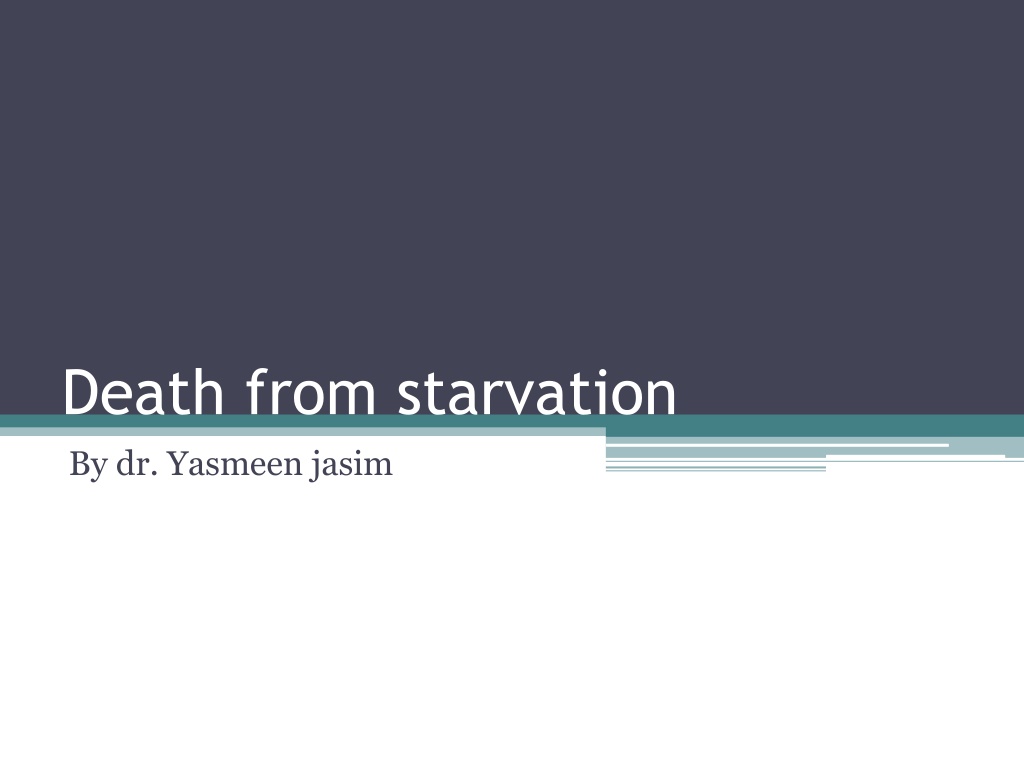
 undefined
undefined






























